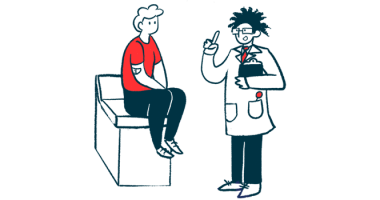Exploratory Surgery Helps Achieve Remission in MRI-negative Cushing’s

For people with Cushing’s disease who have pituitary tumors that are not visible by MRI, careful exploratory surgery coupled with initial analyses to identify the location of a tumor can be used to achieve remission, a new study highlights.
“The rate of MRI-negative [tumors] is reported to be between 36 to 63%,” the researchers wrote, adding, “Although MRI-negative Cushing’s disease presents significant challenges to neurosurgeons, surgical management remains essential in achieving remission.”
The team also reported that exploratory surgery is important for “decreasing the likelihood of complications.”
The study, “MRI-negative Cushing’s Disease: Management Strategy and Outcomes in 15 Cases Utilizing a Pure Endoscopic Endonasal Approach,” was published in the journal BMC Endocrine Disorders.
Cushing’s disease is caused by a tumor in the brain’s pituitary gland. This causes the pituitary gland to release excessive amounts of a signaling molecule called ACTH, which prompts the production of high levels of the stress hormone cortisol in the body. High cortisol levels ultimately cause most of the disease’s symptoms, which typically include weight gain, fat accumulation, and skin problems.
The standard care for Cushing’s is surgery to remove the disease-driving tumor. Magnetic resonance imaging, or MRI, is commonly used to locate the tumor before surgery. However, in some patients, the tumor may not be clearly visible on the MRI scans.
Now, researchers in Iran reported 15 cases of people with Cushing’s disease who had tumors that were MRI-negative. The study also included data from 119 Cushing’s patients whose tumors were readily visible on MRI.
Among the 15 patients without MRI-visible tumors, a technique called inferior petrosal sinus sampling (IPSS) was used to help locate the tumor. IPSS involves measuring ACTH levels in the veins that drain the pituitary gland, which can give clues as to which side of the pituitary the tumor can be found.
Here, IPSS indicated that seven patients had tumors on the right side of the pituitary gland, while five had tumors on the left side. The remaining three had tumors in the center of the pituitary gland.
All of the patients underwent endoscopic endonasal surgery — a procedure in which a tube is inserted into the brain through the nose to remove the tumor.
In more than half of the patients (60%), the IPSS results were in agreement with exploratory surgery findings. However, in 26% of the cases, tumors were found on the opposite side of what was indicated by IPSS, and in 13% of the patients, no tumor was found.
Among the 15 patients, all but one (93%) achieved remission following surgery. Of these, 12 remained in long-term remission over a follow-up time of more than five years, while the other two experienced recurrence.
“In this study we present the outcomes of pure endoscopic endonasal surgical treatment of fifteen patients with MRI-negative Cushing’s disease. Due to the arduous nature of treatment in this patient population, we used a precise method of [exploratory surgery to locate the tumor], resulting in initial remission in 93% of patients post-operatively,” the researchers wrote.
“Surgical treatment of MRI-negative Cushing’s disease is a demanding scenario necessitating multidisciplinary management. An experienced neurosurgeon working in collaboration with an endocrinologist should [first] specify the most likely region of the tumor via IPSS,” they wrote. Following that, exploratory surgery is “an invaluable tool in identifying [tumors].”
According to the researchers, remission rates did not differ between MRI-negative patients and those with visible tumors. Among the 119 patients whose tumors were seen on MRI scans, short-term remission rates were 94.9%. The rate of long-term remission was 85.7%.







